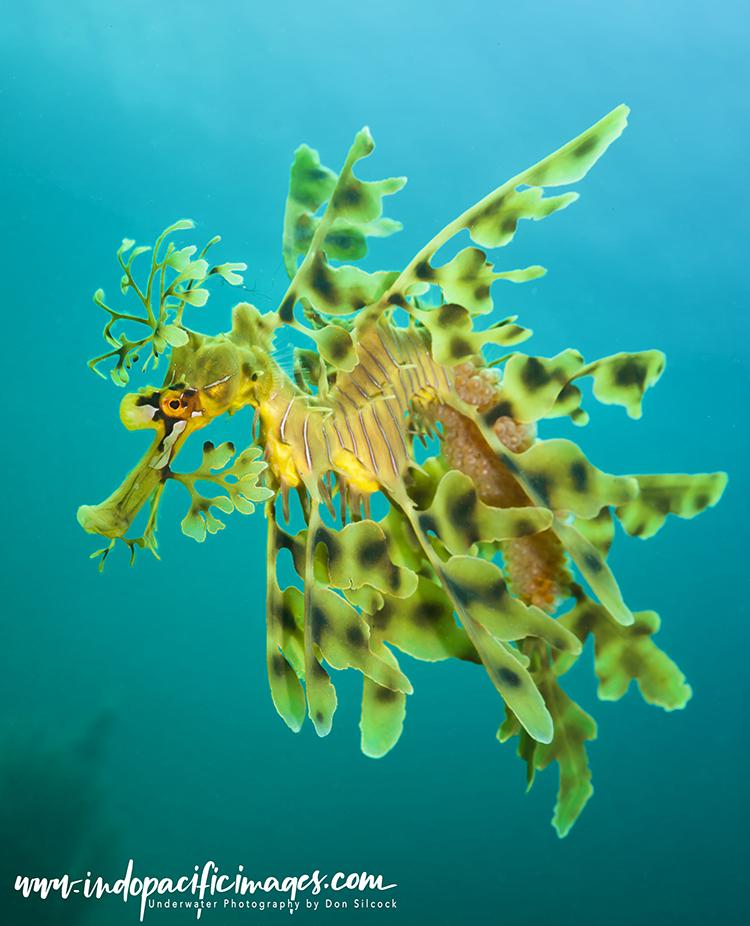Thousands of vibrant weedy and leafy seadragons are dying off along Australia’s southern coastline, victims of a devastating toxic algal bloom sweeping through their habitat. Researchers warn that the unprecedented scale of this marine die-off poses serious threats to these iconic and delicate species, raising urgent concerns about the escalating environmental impacts of harmful algal events fuelled by climate change and coastal pollution.
Seadragons Face Mass Mortality Amidst Worsening Algal Bloom Crisis
Australia’s iconic seadragons are facing a dire threat as an unprecedented algal bloom spreads across coastal waters, releasing toxic compounds that are devastating marine life. Experts warn that the bloom, driven by a combination of rising sea temperatures and nutrient pollution, has created a lethal environment for these delicate creatures. Researchers report that thousands of seadragons have succumbed in affected areas, with symptoms ranging from disorientation to physical distress. Conservationists are alarmed by the rapid scale and intensity of the event, which could jeopardize seadragon populations for years to come.
Authorities are calling for immediate action to address the root causes fueling this environmental catastrophe. Measures proposed include reducing agricultural runoff, enhancing water quality monitoring, and implementing stricter regulations on coastal development. The following table summarizes key factors contributing to the crisis and their ecological impacts:
| Factor | Impact |
|---|---|
| Warm Sea Temperatures | Supports rapid algal growth |
| Excess Nutrients | Increases bloom intensity |
| Toxic Algae Species | Poison marine fauna |
| Habitat Degradation | Reduces seadragon shelter areas |
- Rapid response teams are being mobilized to survey affected zones.
- Research initiatives aim to better understand algal bloom triggers.
- Community engagement is essential to support conservation efforts.
Toxic Algal Blooms Linked to Climate Change Threaten Marine Biodiversity
The recent surge in toxic algal blooms along Australia’s southern coastline has devastated local seadragon populations, with thousands found dead or dying. Scientists link this alarming phenomenon to rising ocean temperatures and nutrient runoff exacerbated by climate change. These blooms produce potent biotoxins that not only impair fish and invertebrates but also disrupt delicate marine ecosystems where seadragons thrive. Conservationists warn that if such events become more frequent, iconic species unique to Australian waters could face extinction pressures.
The impact extends far beyond seadragons. Researchers highlight several affected marine species and environmental factors in the region:
- Seagrass beds-critical habitats shrinking due to toxin accumulation.
- Fish populations-experience mass mortality events linked to algal toxins.
- Water quality-deterioration that affects reproduction cycles of marine life.
| Species | Observed Mortality Rate | Primary Threat |
|---|---|---|
| Common Seadragon | 30% | Toxic Algal Exposure |
| Striped Wrasse | 22% | Oxygen Depletion |
| Seagrass | 15% coverage loss | Habitat Smothering |
Urgent Conservation Measures Needed to Protect Vulnerable Seadragon Populations
The recent surge in toxic algal blooms along Australia’s coastal waters has wreaked havoc on the fragile seadragon populations, pushing them closer to the brink of collapse. These unique marine creatures, known for their striking appearance and ecological significance, are suffering from mass mortality events triggered by high concentrations of harmful algae toxins. Immediate intervention is required to mitigate further losses, including stringent water quality monitoring and habitat restoration projects aimed at reducing nutrient runoff and pollution.
Conservationists and marine biologists are calling for coordinated efforts to safeguard remaining habitats, emphasizing the importance of:
- Enhanced regulation of agricultural practices contributing to nutrient overload
- Rapid response teams to monitor and manage algal bloom outbreaks
- Public education campaigns to raise awareness about seadragon vulnerability
Without swift and effective measures, these iconic seadrags face a grim future, with long-term ecological impacts that could ripple through coastal ecosystems for decades to come.
| Conservation Action | Expected Impact | Timeline |
|---|---|---|
| Water Quality Monitoring | Early detection of toxic blooms | Immediate |
| Habitat Restoration | Improved seadragon breeding grounds | 6-12 months |
| Community Engagement | Increased local stewardship | Ongoing |
Final Thoughts
As the toxic algal bloom continues to spread along Australia’s southern coasts, the mounting losses of these enchanting seadragons underscore the fragile balance of marine ecosystems. Scientists caution that without urgent intervention and stricter environmental protections, the survival of these unique species-and the broader health of ocean habitats-remains at serious risk. Ongoing monitoring and research will be crucial in informing efforts to mitigate the impact of such environmental disasters in the future.




